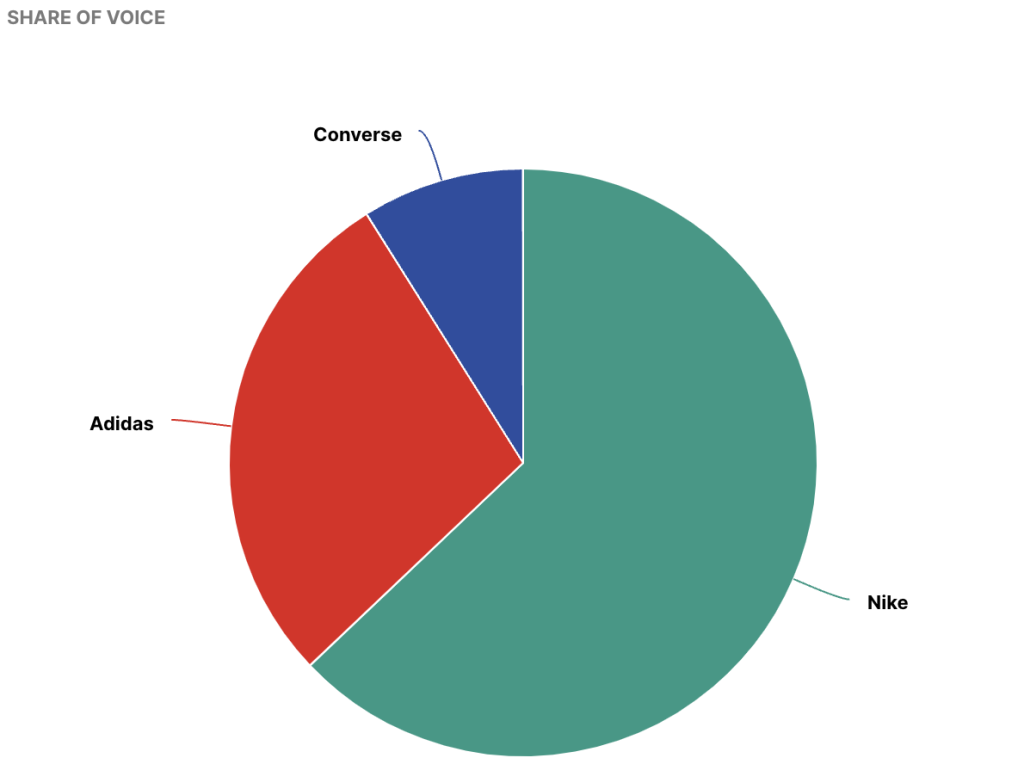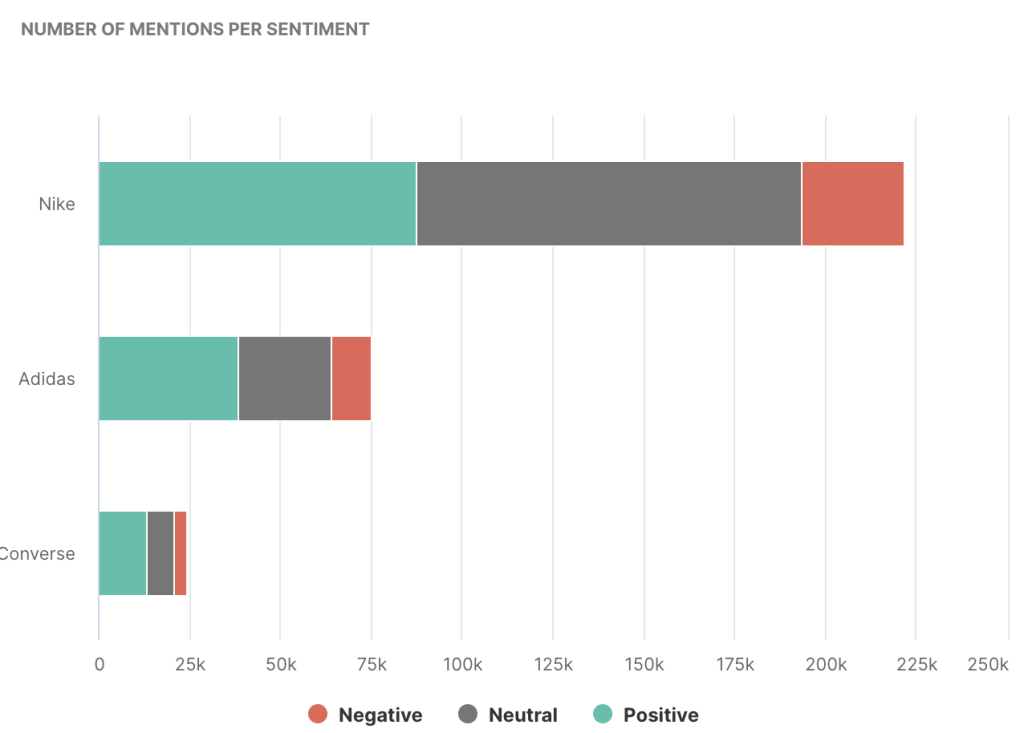Why should you do a competition analysis?
Unless you’ve found yourself in the nichest niche, chances are you have not one, but multiple competitors. All of you vying for the attention of the same target audience.
How do you differentiate yourself? What is your competitive advantage?
? Read: Competitive Analysis: All You Need to Know
You need to have a vision of how you want to be perceived in the eyes of your audience and create a positioning strategy accordingly. Knowing your competitors, their strategy and how the audience perceives them is a step towards getting a leg up on your competition. Also, detecting their strengths and weaknesses can help you identify opportunities and threats.
This is where competitive analysis comes into place.
How to Create Competition Analysis?
Identifying the competition is your starting point. This is where Google and other search engines, social media, or even your customers come into play. Simply googling yourself or your business-related keywords can help you discover competitors by scrolling through results on SERP.
However, while this is a good way of discovering competition when it comes to competition analysis, you may find it lacking. Sifting through all the data from different competitors’ websites, social media, and other sources can be rather repetitive and time-consuming, as it is all done manually. Never mind the storing and analyzing the collected data part.
What if all of that was automated instead?
The alternative to manually researching your competition is media monitoring – a way of discovering relevant mentions in real-time, as soon as they are published online.
We already mentioned that the starting point in competition analysis is identifying the competition.
However, aside from using search engines, social networks or customers to identify competitors – you can also use media monitoring tools. It is as simple as tracking keywords and phrases related to your business and products.
This way you can figure out:
- who your target audience fixates on,
- who the media is talking about,
- which influencers are covering your industry
- who’s creating content (blogs, videos…) on the topic you’re tracking,
- who has a greater share of voice than you, etc.
All these can help guide you in finding the closest competitors.
In the remainder of this blog, we’ll show you in what ways can media monitoring be beneficial for competitive analysis.
How to do Competition Analysis with Determ
- All (top) competitors in one place
- Get notified when new competitors’ mentions appear
- Find influencers
- Keep up with the latest news
- Analyze competitor’s mentions
- Track competitor’s online reviews
- Identify areas for improvement
Let’s take the sports brands, for instance.
You can already name a few off the top of your head, the most prominent nowadays are Nike and Adidas.
However, to get a better idea about possible competitors, you can track keywords such as “sneakers”, “sneaker brands”, “sneaker shoes”, “sneaker news”.
Or, you can be more specific and track, for example, “basketball shoes” to see what brands come up.
This will give you a great overview of brands in your niche. It might also help you discover some newcomers that you weren’t previously aware of.
Get a list of all (top) competitors in one place
Once you’ve identified the competitors, you have to choose the ones you consider most relevant – your direct competitors.
The next step is to start tracking competitors’ mentions and analyze their performance based on that information.
Media monitoring tools are great in that they make it possible for you to keep all the competitors and the collected data in one place, and yet distinctly separated.
You can be just a click away from shuffling from one competitor to another.
Read Competitor Analysis: Stay Ahead of Competition with Media Monitoring
Get notified when new competitors’ mentions appear
When you track competitors via a media monitoring tool, you don’t have to actively seek mentions of them in the media.
Rather, the mentions come to you.
The moment a media outlet or a social media profile mentions the competitors you are tracking, that mention will appear in your feed. You can even set up alerts that notify you about new mentions, usually through email, but you can also integrate media monitoring tools with Slack or Trello (depending on the media monitoring tool).
Find influencers
Media monitoring is also great for finding influencers as part of competitors analysis.
Collaborations with influencers can help you reach a bigger audience, improve brand awareness, build trust, etc.
Not only can you look for your influencers, but you can also see the ones of your competitors!
This gives you an opportunity to analyze your competitor’s influencers, as well. If a certain influencer is not happy with the competitor’s products, this can be a great opportunity for you to reach out! Make sure you know what are the reasons for dissatisfaction and try to offer them that.
Read Find Influencers With Social Listening Tools
Keep up with the latest news
This continues well on the previous point. It pertains to what the competition itself publishes. This includes new product announcements, updates on product upgrades, marketing campaigns, new content, open positions, pricing, etc.
You can even track exclusively their website or social media profiles and directly be informed of any new happenings in their business. Again, you can set up alerts to be notified in real-time, or digests you can receive daily or weekly for a mention overview.
How to use this data for competitive analysis?
For instance, if the competition changes their pricing (i.e. lowers their price), you can adjust accordingly. You do it by emphasizing what you consider your competitive advantage to be – be it your product quality, design or yes, lower prices than those of your competitors.
Analyze competitor’s mentions
One of the biggest advantages of using media monitoring for competitor analysis is the availability of reports. After all, what use is the collected data if we don’t properly analyze it?
With the help of media monitoring tools, you can benchmark your online brand reputation with your competitors. A couple of the more interesting metrics you can use for this purpose are the share of voice and sentiment analysis.
Share of voice as a measure of reach is a great way to find out how you stack up against the competition. How is your brand visibility when put up against your biggest competitors?

In the example above, we can see that Nike and Adidas are taking the lead, with Converse on the 3rd place.
Adidas stacks up quite nicely next to Nike, but Nike is still in the lead. By analyzing Nike’s online strategy, Adidas can work on figuring out how to try and surpass Nike.
Additionally, by analyzing sentiment, you can see what the prevailing emotion is among the target audience when it comes to your competitors.
- Does it lean more towards the positive or negative sentiment?
- What caused one or the other?
- How does it compare to your own sentiment analysis?

Another great way to analyze competitors’ mentions and online activity is by using our Custom reports.
Determ’s custom reports
In this example, we’ve set up a chart that shows mentions of Nike in a one-day period by hours. As you can see from the picture below, there was a constant stream of mentions during the day with one large spike at around 1 pm.
This chart alone can tell you a lot about your competitors:
- when they post,
- on which channels they post,
- on which channels are they mentioned the most, etc.
But, it gets better!
You can create an additional chart (pictured below) that can give you even more context.
This chart shows you on which channels did the audience interacted with the posts the most. As you can see from the picture below, Nike got the most interactions from the audience through YouTube.
This is just one of the many ways you can use Custom charts – you can choose different dimensions, trim conditions, chart types, time periods, and other parameters that fit your needs the most.
Read 5 PR Report Templates and Hacks to Instantly Prove the Value of Your Work
Track competitor’s online reviews
Aside from knowing which social media channels competitor’s customers are using, it is essential to know what their thoughts are on the competitor’s products and services.
Customer’s online reviews are an excellent way to find inspiration on how to improve your product or service. While tracking your own online reviews, keep an eye out for your competitor’s reviews as well.
That way you might detect what customers don’t like about competitors’ products. Similar to influencers, this is a great opportunity for you to jump in and offer them what your competitors are lacking.
Read: Online Reviews: the Ultimate Guide on how to Track and Handle them
Identify areas for improvement
Once you perform the competitive analysis, you can have a better understanding and a deeper insight into your competition. Most importantly, you’ll get a deeper insight into your own business, too.
You may find areas that are lacking and require improvement when compared to your competitors’ strategy – be it in content, social media performance, SEO or other areas.
In other words, you’ll be able to identify possible opportunities for improvement or minimize possible threats. As is the aim of competitive analysis.
Final Thoughts on the Competition Analysis
Competition analysis is something that every business ought to do. Be it the “old-fashioned way” or with the help of the newest tools and technologies – it needs to be done.
To keep ahead of, or at the very least, be in step with your biggest competitors.
Book a demo with Determ, get a free trial and find reliable data that will help you achieve a competitive advantage!



